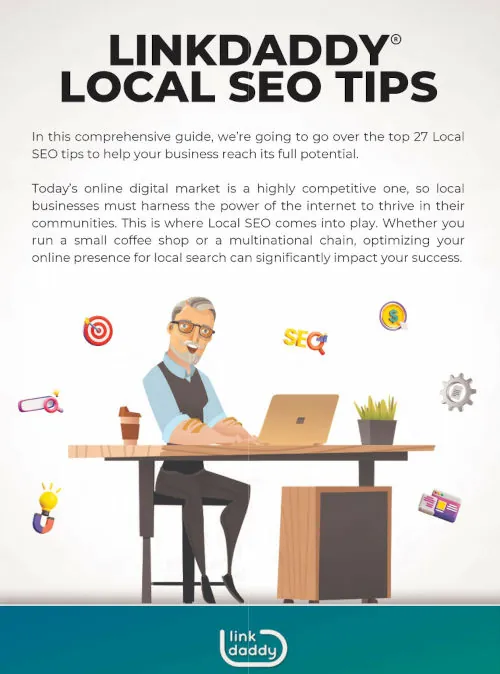Not all links are created equal. The quality of the linking website, as well as the relevance and context of the link, are important factors to consider when creating eCommerce backlinks.
And so link building for eCommerce can be challenging. It requires getting high-quality, relevant backlinks from authoritative websites. Quality over quantity is the key.
Search engines like Google take into account the number of links pointing to your website and their relevance and trustworthiness—Google E-E-A-T.
Google and other search engines ensure the websites they display to their users are trustworthy, authoritative, and contain informative, interesting, and reliable content.
So when you get quality backlinks from reputable websites, your eCommerce store will be seen as a trustworthy source of information by search engines.
Caveat
In link building, there is a fine line between what’s considered legitimate and what can get your website flagged for spam.
These techniques are grouped into “white hat” and “black hat” link-building techniques.
“White hat” link building refers to tactics that are within the framework of Google’s guidelines and encourage natural organic growth. In this article, we will focus on white hat link-building tactics.
“Black hat,” on the other hand, refers to unethical and manipulative methods used to boost a website’s search engine rankings artificially. These techniques violate search engine guidelines and can result in severe penalties, such as a complete ban from search engines.
Some of these techniques include:
- Link buying or link farming – This involves purchasing low-quality links from irrelevant or spammy websites to increase the number of links pointing to your site artificially.
- Link schemes – These include link exchange networks or link wheels, where websites agree to link to each other in a reciprocal arrangement to manipulate search engine rankings.
- Comment spamming – This tactic involves leaving irrelevant or spammy comments on other websites with links to your site to boost your search engine rankings.
- Hidden links – This is placing links in the background of a website’s pages, so users can’t see them, but search engines can.
- Keyword stuffing – Use of irrelevant or repetitive keywords in an attempt to manipulate search engine rankings.
Now let’s take a look at some effective “white hat” link-building techniques you can use to boost your eCommerce store rankings.
1. Create Link-Worthy Content
Many eCommerce websites focus mostly on product pages and things like on-page optimization.
And many more don’t even have a blog.
But content marketing and blogging are effective white-hat link-building tactics that can help you get valuable backlinks from other websites.
How? Content is the backbone of your website and provides value to your audience, helping establish your brand as an authoritative voice in your industry.
So other websites will be more likely to link to your content, especially if you provide them with expert insights and information they find valuable.
So what’s the type of content that can attract links?
Product Reviews
Product reviews play a crucial role in the purchasing decision-making process. They provide valuable insights into a product’s performance and help potential customers make informed buying decisions.
So publishing product reviews on your website is a great way to build links, as other websites often reference these reviews in their content.
Buyer’s Guides
Buyer’s guides are comprehensive product reviews that provide buyers with the in-depth information they need to make an informed buying decision.
Writing buyer’s guides that address common pain points and provide valuable insights into a particular product or industry makes your content relevant to your target audience. It appeals to other websites that cover similar topics.
They also provide a unique angle on a product. This increases the likelihood of your content being shared and linked to by other websites, as they recognize its value for their audiences.
Expert Opinions and Interviews
Featuring interviews with well-known experts in your industry or niche demonstrates your website’s commitment to providing valuable and relevant information to your audience. This will position your website as a source of authority and expertise.
Original Surveys and Polls
Surveys offer valuable insights into industry trends, as well as information about the preferences and behaviour of your target audience.
Other websites may reference your survey results in their content, which will help boost your backlink profile.
Case Studies and Success Stories
Success stories or case studies give potential customers a firsthand account of how your products have helped other businesses.
These provide an excellent opportunity for link-building, as other websites may reference your case studies in their content to demonstrate the value of your product.
Tips for Creating Content That Is Link-Worthy
Once you’ve decided to create content for link-building purposes, there are a few important tips that you should keep in mind:
- Focus on original research or data – Create content based on original research or data. This type of content is more appealing and valuable to other websites.
- Write in-depth and comprehensive content – Create content that covers all aspects of a topic. Aim to provide value to your audience and help to educate or inform them.
- Use visuals and multimedia – Visuals, such as images, videos, and infographics, make your content more appealing and engaging, increasing the chances of it being shared and linked to by others.
- Address current trends or challenges – Content focusing on current trends is usually timely and relevant, increasing the likelihood of it being shared and linked to by others.
- Foster community engagement – Encouraging engagement and feedback from your audience can increase the reach of your content. Use social media and other platforms to promote your content and engage with your audience.
- Make use of internal linking – Internal linking helps increase the visibility of your content on your website and makes it easier for search engines to crawl and index your content.
- Network with other websites and influencers – Build relationships with other websites and influencers in your industry or niche to increase the reach of your content. Consider contacting websites and influencers who have previously shared or linked to similar content.
2. Build Broken Links
This tactic is time-consuming but can be an effective way to build quality links.
Broken links, also known as “dead links,” are hyperlinks that no longer lead to a valid web page.
For example, you’re writing an article that references a source. When the website containing that source is taken down, the link will no longer take readers to the page they were expecting. This negatively affects both user experience and your website’s SEO.
Also, links from other websites pass “link equity” or “link juice” to your website. This link equity helps to improve your website’s search engine rankings and visibility. However, if the link is broken, this link equity will not be passed on to your website, leading to a loss of potential search engine rankings and visibility.
So, how do you find and fix broken links?
How to Find Broken Links on Other Websites Related to Your Niche
You can use several tools and methods to find broken links on other websites related to your niche.
- Google Search – Simply search for keywords related to your niche and look for links that return a “404 error” or a “page not found” message. This method is quite time-consuming. You can also add the “related:” operator to your search query to find related websites.
To find websites related to a specific niche, simply type the keyword for that niche followed by the “related:” operator. For example, if you want to find websites related to the niche of “pet supplies,” search for “related: pet supplies” in Google.
- Broken Link Checker Tools – Many broken link checker tools are available online to help you identify broken links on other websites related to your niche. Some popular tools include Dead Link Checker, W3C Link Checker, and Broken Link Detective.
- Backlink Analysis Tools – Tools such as Ahrefs, Moz, and SEMrush, help you identify broken links on other websites related to your niche.
Now, after identifying the broken links, what next?
Tips for Offering to Replace Broken Links With Links to Your eCommerce Website
Reach out to the website owners. Contact them via email or social media and inform them about the broken link on their site.
Offer to replace the broken link with a working link to your eCommerce website.
3. Search for Unlinked Product or Brand Mention
This refers to instances where your brand or product is mentioned on a website, but there is no hyperlink to your eCommerce website.
Unlinked mentions provide valuable opportunities for building backlinks.
Getting backlinks from unlinked products or brand mentions can be challenging but not impossible. With a well-executed outreach strategy and compelling content, it can be possible to secure backlinks from these unlinked mentions.
How to Find Unlinked Brand Mentions
To find unlinked products or brand mentions, you can use Google Search. Just search for your brand name in quotations to find the exact match.
For example, if your brand name is “Eco Shop,” you would search for “Eco Shop” in Google. This will bring up a list of pages that have mentioned your brand but are not necessarily linked to your site.
Another way to find unlinked mentions is to use a brand monitoring tool like Google Alerts, Mention, or Brand24. These tools allow you to set up notifications for mentions of your brand or products and can help you track when your brand is mentioned online.
Additionally, you can use social media listening tools like Sprout Social, BuzzSumo, and Falcon.io to monitor mentions of your brand on social media platforms.
Once you’ve found unlinked mentions of your brand, you can contact the website owners, influencers, bloggers, or journalists and ask them to link to your website.
Remember
Having a mentionable product or brand is crucial for building a strong online presence and attracting backlinks. Here are some tips for making your product or brand mentionable:
- Create unique, high-quality, and useful products that stand out from competitors.
- Offer excellent customer service and engage with your customers to build a positive reputation.
- Participate in industry events, forums, and online communities to establish yourself as a thought leader in your field.
- Offer exclusive perks and incentives to influencers, bloggers, and journalists to encourage them to mention your brand.
- Share your brand story and company culture through content marketing to connect with your target audience.
- Collaborate with other brands, influencers, and media outlets to increase your brand’s visibility and credibility.
- Continuously monitor your brand mentions and engage with your fans, customers, and influencers to foster positive relationships and generate positive word-of-mouth.
4. Analyze Your Competitors’ Backlinks
Competitor backlink analysis is examining your competitors’ backlinks to determine their traffic sources and identify opportunities for acquiring backlinks for your eCommerce website.
This analysis will provide valuable insights into your competitors’ strategies and tactics to build their online presence. This includes the types of content and websites that are linking to them.
By understanding these factors, you can tailor your link-building efforts to be more effective and maximise your chances of success.
Additionally, competitor backlink analysis can also help you identify new opportunities for acquiring backlinks, such as partnerships with other websites, guest blogging opportunities, and potential link exchanges.
How to Analyze Competitor Backlinks
Here’s how you can analyze competitor backlinks:
- Identify your competitors – Start by researching your main competitors and making a list of their websites.
You can use a combination of the following methods to identify your competitors:
- Keyword research – Use keyword research tools such as Google Keyword Planner or SEMRush to identify the keywords driving traffic to your competitors’ websites. This will give you an idea of the type of content they are producing and the topics they are covering.
- Search engine results – Search for your main keywords on Google and see which websites rank high. These are likely to be your competitors.
- Industry forums and communities – Participate in industry forums and communities to see who is active in your niche. Look for websites frequently mentioned by other members and add them to your list of competitors.
- Social media – Follow your competitors on social media platforms such as Twitter, LinkedIn, and Facebook to see what they are doing.
- Use a backlink analysis tool – Use a tool like Ahrefs or Moz to analyze your competitors’ backlinks. These tools will give you a detailed report of your competitors’ backlink profiles, including the number of backlinks, the quality of the links, and the sources.
For example, Ahrefs provides comprehensive backlink data, including the anchor text and type of link (dofollow or nofollow).
To see the backlinks in Ahrefs, just enter the competitor’s website and hit “Check backlinks.”
- Analyze the links – This next step is to look at the backlinks your competitors have acquired and categorize them by type (e.g., editorial links, resource links, etc.). Pay attention to the links’ sources and note any websites linking to multiple competitors.
- Look for opportunities – Finally, use the information you have gathered to identify opportunities for your link-building efforts. Look for websites linked to your competitors and see if you can also get a link from them.
Finally, be sure to keep track of your link-building efforts and monitor analytics to gauge the effectiveness of your strategies.
5. Write and Publish Guest Posts
Guest posting involves writing and publishing an article on another website in order to build backlinks and increase exposure for your brand. That is, when you write the guest post, you include a link back to your website.
This method is particularly effective for eCommerce websites as it allows you to target a new audience and reach a wider network of potential customers.
To make the most out of guest posting, you should focus on high-quality content and choose websites that are relevant to your niche. Additionally, it’s crucial to properly format and optimize your guest post in order to maximize its impact.
Expert Tip
Guest post updates – Instead of writing new guest posts from scratch, you can reach out to editors and website owners and request to update and republish old guest posts.
You pick guest posts that already have backlinks. So you update them and include your link in the process.
Use tools such as Ahrefs or SEMRush to find websites that have already linked to your competitors. Then reach out to the website owners and request to update their guest posts.
How to Find Relevant Websites for Guest Posting
To find relevant websites for guest posting, follow these steps:
- Start with keyword research – Determine the keywords related to your niche and use them to find websites and blogs that cover similar topics.
- Use Google – Use search operators like “your niche keyword” + “write for us” or “keyword” + “submit guest post” to find websites that accept guest posts.
For example, if you are in the technology industry, you could search for “artificial intelligence” + “write for us” or “virtual reality” + “submit guest post.” This will give you a more targeted list of websites that may be a good fit for your guest post content.
- Check competitor backlinks – Analyze your competitors’ backlinks to see if they have any guest posts and find out which websites they have posted on.
- Utilize Google Trends – Check the latest trends related to your niche and find websites that cover those topics.
- Utilize Social Media – Search for relevant hashtags on social media platforms like Reddit, Twitter, LinkedIn, and Facebook to find websites and communities related to your niche.
For example, let’s say you run an eCommerce website that sells outdoor gear. You can search for hashtags like #outdoorgear, #hiking, and #camping on Reddit to find websites, communities, and influencers talking about products in your niche.
You can also search for groups on Facebook that are dedicated to outdoor enthusiasts and see if they accept guest posts or if you can contribute to their discussions. By leveraging social media, you can find new websites to guest post on and reach new audiences.
- Use advanced search tools – Ahrefs and Moz allow you to search for websites based on the keywords and topics you’re interested in. These tools also provide data on the website’s backlinks and Domain Authority (DA) score, which can help you assess their credibility.
6. Create FAQs and Helpful Resources
Frequently asked questions (FAQs) and helpful resources can attract backlinks to your eCommerce website as it helps position your website as an authoritative source in your industry.
By providing valuable information and resources, other websites and bloggers see your content as valuable and choose to link to it. This drives referral traffic, increases your visibility, as well as helps improve your search engine rankings.
For example, let’s say you own a website that sells fitness accessories. You can create an FAQ page about fitness and health topics related to your niche, such as how to choose the right sports equipment or how to stay healthy while traveling.
Additionally, you can create helpful resources such as checklists, infographics, or guides that provide valuable information about your products or industry.
Tip: If you are dealing with technical products, providing a glossary of technical terms can be helpful for both customers and website visitors.
Make sure you link back to your website on the resources and FAQs page.
7. Use Influencer Marketing
Influencer marketing involves partnering with individuals who have a strong online presence and a large following in your target market. Influencers provide valuable backlinks by inserting links to your website within their content, such as blog posts, social media posts, or videos.
Also, by leveraging their reach and credibility, you can attract new customers and drive traffic to your website.
How to Find Influencers in Your Niche
- Utilize social media – Look for popular influencers in your niche by searching relevant hashtags on platforms such as Instagram, Twitter, and YouTube. For example, if you’re in the beauty industry, search for hashtags like #beautyblogger, #makeupartist, or #skincare.
- Collaborate with bloggers – Reach out to bloggers in your niche and ask if they would be interested in reviewing your products or collaborating on a blog post. Offer to send them a product sample in exchange for a review or mention on their website.
- Attend industry events – Attend events, such as conferences or trade shows, in your niche and network with influencers and bloggers. Offer them your products or services to test out and mention on their platforms.
- Utilize influencer marketing platforms – Use influencer marketing platforms, such as AspireIQ, Influencer.co, or Upfluence, to find and collaborate with influencers in your niche on sponsored content.
- Partner with industry leaders – Reach out to the most prominent leaders in your niche and ask if they would be interested in partnering with you for a long-term collaboration. Offer them exclusive products or access to your services in exchange for a mention on their platform.
Tips for Partnering With Influencers to Promote Your eCommerce Website
- Identify influencers in your niche – Start by researching your competitors and making a list of popular influencers and bloggers in your industry. Utilize Google and social media platforms to find relevant influencers.
- Evaluate their audience and reach – Ensure the influencer has a large, engaged audience that aligns with your target market. Look at their engagement rates, followers, and social media reach.
- Approach the influencer – Personalize your outreach and clarify why you think the influencer would be a good fit for your brand. Offer them a valuable incentive for promoting your website, such as a discount code or exclusive access to new products.
- Create high-quality content – Provide influencers with content that is valuable and relevant to their audience. This can include high-quality images, videos, or articles.
- Build a relationship – Maintain open communication and establish a long-term relationship with the influencer. Regularly engage with their content and share their posts to strengthen the partnership.
- Track your results – Use Google Analytics to track the referral traffic from the influencer’s website and measure the success of your campaign.
Remember to give the influencers links back to your website, so their followers can easily find and shop at your store.
8. Pitch to Get Featured on Product List Articles or “Where to Buy” Pages
These are articles or pages on websites that showcase a collection of products and where they can be purchased.
These articles focus on a specific category of products, such as the best laptops or on a particular brand.
An example of a product list article could be a “Top 10 Best Running Shoes” article on a fitness blog. And an example of a “Where to Buy” page could be a shopping website page listing different stores and online marketplaces where a particular product can be purchased.
How Do You Search This on Google
To search for Product List Articles or “Where to Buy” Pages on Google, you can use the following search operators:
- [your brand name] intitle:(“where to buy” OR “stockists”)
- “your keyword” + intitle:links
Using these search operators, you can find websites featuring lists of recommended retailers or products for your niche. These websites may be opportunities to promote your eCommerce website and gain a backlink.
For example, if you sell running shoes, you can search for running shoes intitle:(“where to buy” OR “stockists”).
Then contact the website editors and ask them what’s required for your store to get linked in their “where to buy” page.
You can also use this tactic to get featured in product comparison articles and roundup posts.
These are usually published on authority websites and often link to many different stores or products.
Contact the website editor, provide details of your product or store, and ask them to include you in their comparison article. You could offer them additional content or exclusive access to your products in exchange.
This could help you build a link and increase exposure for your business.
Frequently Asked Questions
1. What is the difference between nofollow and dofollow links in link building?
The difference lies in their ability to transfer “link juice” and influence search engine rankings. A dofollow link allows search engines to follow and crawl the link, counting it as a vote of confidence for the linked website.
On the other hand, a nofollow link tells search engines not to follow the link, effectively removing any influence it could have on the linked website’s rankings.
2. How do I know if a website is a good candidate for a backlink to my eCommerce site?
When considering a website as a potential backlink for your eCommerce site, ask yourself these questions:
- Does the website’s content align with your eCommerce site’s products or services?
- Is the website reputable and trustworthy? – Check the website’s domain authority (DA) and page authority (PA) using a tool like Moz or Ahrefs.
- Does the website have a significant amount of traffic? – Use tools like SimilarWeb or SEMrush to estimate the website’s monthly traffic.
- Is the website within your eCommerce site’s niche or industry?
- Have your competitors received backlinks from this website?
3. What is link exchange, and how does it contribute to link building for eCommerce websites?
Link exchange is where two websites agree to place each other’s links on their respective websites, often to increase their own website’s visibility and authority.
However, being careful when engaging in link exchanges is important, as not all links are equal. Search engines, like Google, view links as a way to determine the relevance and authority of a website. So it’s important to only engage in link exchanges with reputable and relevant websites.
4. How can I measure the success of my eCommerce website’s link-building efforts?
Here are some ways you can measure the success of your link-building efforts for your eCommerce website:
- Track your organic traffic
- Monitor your search engine ranking
- Check your backlink profile – use tools like Ahrefs or Majestic.
- Analyze your referral traffic
- Monitor your conversion rate
Remember: Ranking High in Search Engines Requires More Than Quality Backlinks
Regarding ranking in search engine results pages (SERPs), having quality backlinks is important, but it’s not the only factor that matters. A successful link-building strategy is just one piece of the puzzle.
To maximise your visibility and reach, you must take a comprehensive approach considering all the elements contributing to your website’s success. This means:
- Creating compelling content
- Optimizing your website’s technical aspects
- Optimizing your on-page SEO
- And engaging in an ongoing process of analysis and improvement.
So, while building quality backlinks is a key component of any effective SEO strategy, don’t get too caught up in the details and forget about the bigger picture.









